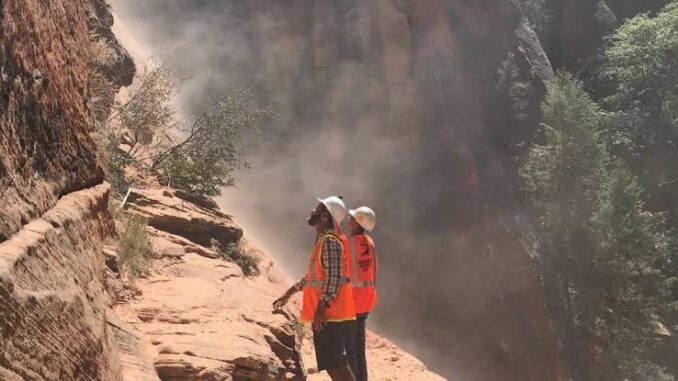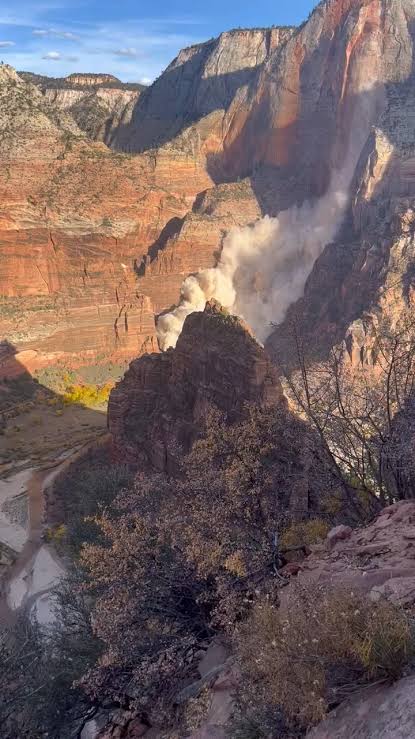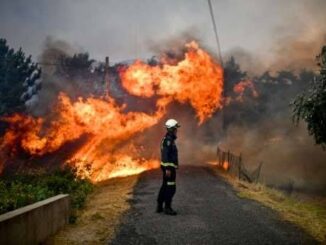
A serene morning hike turned into a desperate race against time when a sudden and unexplained rockslide struck the Hidden Canyon trail in Zion National Park, trapping over two dozen hikers in a remote and difficult-to-access section of the canyon. The rockslide occurred just before 11:00 a.m., shaking the tranquil landscape and sending massive boulders tumbling from the cliffs above, blocking both the entry and exit points of the narrow trail.
Park rangers and emergency responders were notified after distressed hikers managed to send out GPS emergency beacons and patchy cell phone texts from within the canyon. Witnesses described hearing a “deep rumbling” followed by a thunderous crash that echoed throughout the park.
“It was like the mountain groaned, and then the world just shifted,” said Mark Danvers, a hiker who had just exited the canyon minutes before the collapse. “If we had lingered, we might have been buried too.”
Among those trapped are families, solo adventurers, and a guided photography group, many of whom were exploring the hidden slots and narrow ledges that make Hidden Canyon a popular yet challenging hike. The terrain characterized by steep drop-offs and sheer cliffs now poses an added obstacle to rescue operations.
Emergency personnel quickly mobilized from Zion Canyon Visitor Center, with search-and-rescue teams deploying by foot, rope, and helicopter. However, unstable terrain and ongoing rockfall have slowed progress. By 4:00 p.m., rescuers had established limited communication with a group of 11 hikers sheltering beneath a rocky outcrop. They reported minor injuries, dehydration, and fear of further collapses.
“This is one of the most complex and hazardous rescue missions we’ve undertaken in recent years,” said Ranger Kelsey Morano, leading the Zion Incident Response Team. “We’re doing everything we can to get to these people safely and quickly, but daylight is fading, and the rock face is still moving.”
Geologists from the U.S. Geological Survey have been called in to assess the stability of the area, as initial reports suggest the slide may have been triggered by a combination of seismic microtremors and recent extreme heat. Temperatures in the area have reached over 105°F (40°C) in recent days, expanding and weakening the rock layers that form the canyon walls.
Loved ones have begun gathering at the park’s emergency coordination center, anxiously awaiting updates. Among them is Sarah Lieman, whose husband and teenage daughter were hiking the trail on a summer trip.
“I just want to hear their voices,” she said tearfully. “He texted me once to say they were okay, but the signal went out.”
As nightfall descends, the park has issued a closure of all upper canyon trails, and the National Guard has been placed on standby for aerial night rescues if conditions permit.
This tragedy has cast a shadow over one of America’s most beloved national parks, known for its breathtaking beauty and serenity. But tonight, serenity has turned to silence, pierced only by the whir of helicopter blades and the hope that all will make it out alive.


Be the first to comment